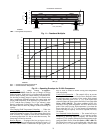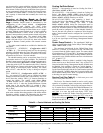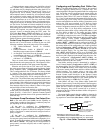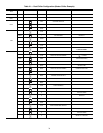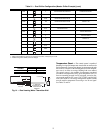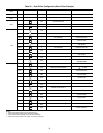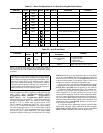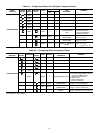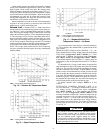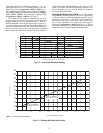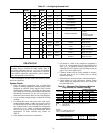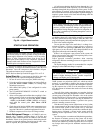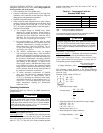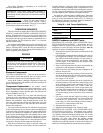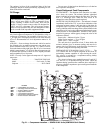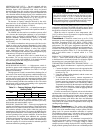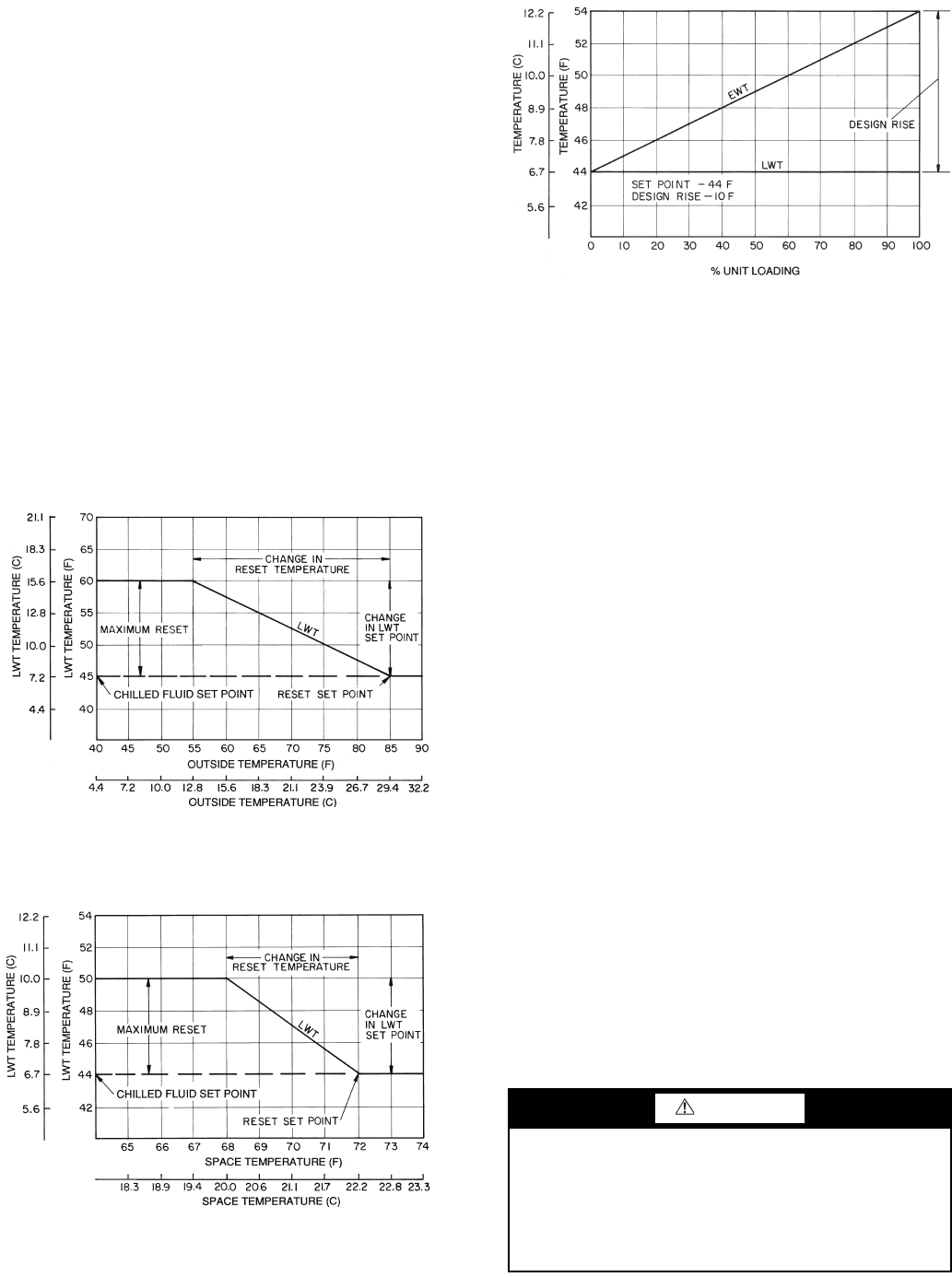
31
Under normal operation, the chiller will maintain a constant
leaving fluid temperature approximately equal to the chilled
fluid set point. As the cooler load varies, the entering cooler
fluid will change in proportion to the load as shown in Fig. 17.
Usually the chiller size and leaving-fluid temperature set point
are selected based on a full-load condition. At part load, the flu-
id temperature set point may be colder than required. If the
leaving fluid temperature was allowed to increase at part load,
the efficiency of the machine would increase.
Return temperature reset allows for the leaving temperature
set point to be reset upward as a function of the return fluid
temperature or, in effect, the building load.
Demand Limit — Demand limit is a feature that allows
the unit capacity to be limited during periods of peak energy us-
age. There are 3 types of demand limiting that can be config-
ured. The first type is through 2-stage switch control, which will
reduce the maximum capacity to 2 user-configurable percentag-
es. The second type is by 4 to 20 mA signal input which will re-
duce the maximum capacity linearly between 100% at a 4 mA
input signal (no reduction) down to the user-configurable level
at a 20 mA input signal. The third type uses the CCN Loadshed
module and has the ability to limit the current operating capaci-
ty to maximum and further reduce the capacity if required.
NOTE: The 2-stage switch control and 4 to 20-mA input sig-
nal types of demand limiting require the energy management
module (EMM).
To use demand limit, select the type of demand limiting to
use. Then configure the demand limit set points based on the
type selected.
DEMAND LIMIT (2-Stage Switch Controlled) — To con-
figure demand limit for 2-stage switch control set the Demand
Limit Select (Configuration
RSET
DMDC) to 1. Then
configure the 2 Demand Limit Switch points (Configura-
tion
RSET
DLS1) and (Configuration
RSET
DLS2)
to the desired capacity limit. See Table 27. Capacity steps are
controlled by 2 relay switch inputs field wired to LVT as shown
in Fig. 5.
For demand limit by 2-stage switch control, closing the first
stage demand limit contact will put the unit on the first demand
limit level. The unit will not exceed the percentage of capacity
entered as Demand Limit Switch 1 set point (DLS1). Closing
contacts on the second demand limit switch prevents the unit
from exceeding the capacity entered as Demand Limit Switch
2 set point. The demand limit stage that is set to the lowest de-
mand takes priority if both demand limit inputs are closed. If
the demand limit percentage does not match unit staging, the
unit will limit capacity to the closest capacity stage.
To disable demand limit configure DMDC to 0. See
Table 27.
EXTERNALLY POWERED DEMAND LIMIT (4 to
20 mA Controlled) — To configure demand limit for 4 to 20
mA control set the Demand Limit Select (Configura-
tion
RSET
DMDC) to 2. Then configure the Demand
Limit at 20 mA (Configuration
RSET
DM20) to the
maximum loadshed value desired. Connect the output from an
externally powered 4 to 20 mA signal to terminal block LVT,
terminals 7 and 8 (+,–). Refer to the unit wiring diagram for
these connections to the optional/accessory energy manage-
ment module and terminal block. The control will reduce al-
lowable capacity to this level for the 20 mA signal. See Table
27 and Fig. 18.
LEGEND
LWT — Leaving Water (Fluid) Temperature
Fig. 15 — Outdoor-Air Temperature Reset
LEGEND
LWT — Leaving Water (Fluid) Temperature
Fig. 16 — Space Temperature Reset
CAUTION
Care should be taken when interfacing with other manufac-
turer’s control systems, due to possible power supply
differences, full wave bridge versus half wave rectification.
The two different power supplies cannot be mixed.
ComfortLink™ controls use half wave rectification. A sig-
nal isolation device should be utilized if a full wave bridge
signal generating device is used.
LWT
LWT
LEGEND
Fig. 17 — Standard Chilled Fluid
Temperature Control — No Reset
EWT —
Entering Water (Fluid) Temperature
LWT —
Leaving Water (Fluid) Temperature



